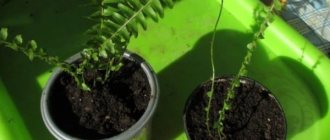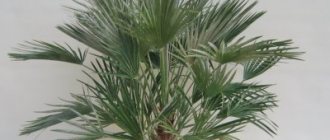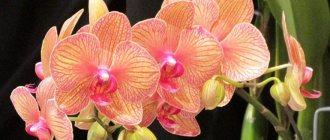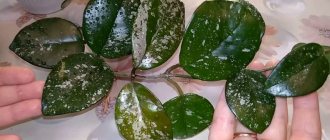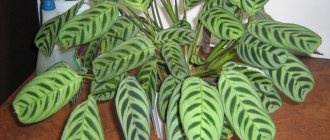- August 16, 2019
- Houseplants
- Ksenia Stepanishcheva
Fern is great for landscaping apartments and houses with insufficient lighting. This plant is considered shade-tolerant, so it can be placed on north-facing windows, in bathrooms, kitchens, and hallways. It also feels comfortable at high temperatures and humidity. How to care for ferns at home is described in the article.
Peculiarities
Ferns grow in different climates, in meadows, swamps, and forests. They can also be on trees, but most of them are found in the tropics. It is tropical species that are suitable for growing at home. There are also species that are frost-resistant. Gardeners willingly grow ferns in their garden plots.
All varieties of plants include 2 parts: roots and openwork, feathery, arched leaves, which are called fronds. Many ferns have pinnately dissected leaves, but there are species with solid leaves that differ in shape and size.
Plant reproduction occurs by spores, like fungi, mosses and algae. They are hardy in nature, but may not survive in the home even with quality care and the creation of suitable conditions. You can determine the cleanliness of the air by plants: if they are in a polluted atmosphere, the leaves wither.
One of the rarest ferns - polypodium
Polypodiums, or Centipedes, are ancient ferns from the family of the same name, Centipedes (Polypodiaceae). Their name, like their appearance, has not changed for thousands of years. Polypodiums are often confused with Phlebodiums, and changing the classification with the transfer of individual species from one genus to another does not simplify the situation.
But Polypodiums remain the rarer, less extravagant and very special character rare ferns that deserve special status and treatment.
In Europe, centipede ferns are often called sweetroot. But still, translated analogues of the botanical name are much more popular. In nature, centipedes prefer to settle in the Southern Hemisphere. Some species are found in Australia and New Zealand, in southern India, and in South America. This forest plant most often chooses dense forests and jungles with high humidity and fairly secluded lighting; it grows on bushes and trees.
The structure of this fern is often compared to water lilies, emphasizing how atypical a member of the fern class Polypodium actually is. But it is more appropriate to call it an original culture, rather than looking for analogies with aquatic plants.
Polypodiums are characterized by special rhizomes - creeping, scaly, horizontal rhizomes with fairly thick adventitious roots. The rhizomes of polypodiums differ in size and rhizome character. Some polypodiums have thin roots, others have thicker and fleshier roots, but they are easily recognizable by their horizontal arrangement and characteristic scales on the surface. Polypodiums do not form a stem; leaf petioles remain very important organs for them.
All polypodiums grow quite quickly, actively growing in indoor conditions and producing several new leaves annually. They develop in a horizontal plane, gradually spreading, which should be taken into account when choosing a location and when searching for a container or method of cultivation. This is one of the fastest growing types of ferns for growing in rooms and greenhouses, capable of achieving maximum decorative value by the third year of cultivation.
From the upper part of the rhizomes, in rows, on fairly long, segmented petioles, large fronds of leaves develop. The maximum height of polypodium leaves is about 100 cm, although most species are limited to much more modest sizes up to 50 cm in height, and indoor plants are most often compact epiphytes up to 40 cm in height.
Pinnately divided or pinnately dissected, they are distinguished by their dense texture, asymmetrical shape of the lobes and, most often, free veins. The segments are lanceolate or almost tongue-shaped, irregularly wavy, most often with a solid edge and a rounded tip. The leaves of polypodiums unfold very beautifully, from a peculiar shell-like shape they stretch into a tight spiral and then straighten out their lobes.
In some polypodiums the leaves are green, quite dark or brighter, in others they are covered with a bluish coating or uneven, barely visible spots, with thinner or wider, curved or almost straight lobes. The variety of colors in greenhouse and indoor culture is particularly striking.
Sori of polypodiums are formed quite actively and over almost the entire reverse surface of the leaves. They are located closer to the edge of the leaf plate, between the veins, large and round, not covered by a spathe.
Centipede fern, or Polypodium polypodioides. Ransomed63
Manifold
There are several types of indoor ferns that take root well at home:
- Maidenhair. This plant has thin, strong stems and graceful fronds. It prefers warmth, shade and moisture. It is advisable to grow this species in winter gardens and terrariums. Names: Radi, Delicate, Fine-haired, Venus hair.
- Asplenium. This type of indoor fern likes to be in the shade and in moist air. At home, several species are bred that are not similar to each other. These are Nesting and Bulbous, Viviparous.
- Nephrolepis. The plant needs space. The fronds are dissected, which ensures an original openwork effect. Nephrolepis sublime is commonly grown and is very easy to care for. Reproduction is carried out by dividing a large bush or by shoots.
- Blekhnum. The crown is 1 meter in diameter, and the rigid fronds are similar to a palm tree. Commonly grown blechnum humpback and brazilian.
- Davallia. The plant has thick rhizomes. That's why it is called hare's or squirrel's feet.
- Platycerium. The fern has large, showy leaves, like the antlers of a deer.
- Disconia. A mature plant can be 3 meters tall, so it is suitable for spacious rooms.
- Pelley. The plant prefers dry habitats. Pellea Roundifolia and Green are in demand.
- Polypodium. The leaves of the plant are heavily dissected.
Large plants look original in hanging pots and stands. Their feathery leaves are used to decorate bouquets. Torn fronds are quickly restored.
Features of care
How to care for ferns at home? The plant needs regular watering and maintaining comfortable humidity. Almost all types of ferns are drought intolerant. Optimal temperature and lighting are important. It is necessary to properly transplant and propagate ferns. In the absence of competent maintenance, it dies.
If the plant is located near other house flowers, you should check that its openwork leaves are not squeezed. The fronds are fragile and need free space. Damaged and dry leaves should be removed in a timely manner, ensuring the free development of young shoots.
Pests: types and methods of control
Ferns have a special chemical composition, which makes them inedible for a large number of pests. With proper care, the plant is not affected by pests. However, the following types of pests can cause great damage to the decorative properties of plants:
- Slugs . You can fight them by placing baits or manual collection. If there are a large number of slugs, it is recommended to use the drug “Metaldehyde”. The drug is spread on the soil surface.
- Spider mite . Pests appear when the air temperature is too dry. The fronds lose turgor, turn yellow, fall off, and cobwebs appear on the stems. Method of control: increase air humidity, regularly spray with warm water, in case of severe damage, treat the plant with preparations - Actellik, Derris, Fitoverm.
- Aphid . This type of pest rarely affects ferns. They settle on the underside of the frond. The fronds lose color, become faded, and fall off. Method of control: wash the plant under a warm shower, treat with a weak soap solution. In case of severe damage, apply treatment with Intavir.
- Scale insects . They settle on the surface of the fronds on both sides, sticking mainly to the leaf veins and along the stems. The color of scale insects is brown, the appearance of the pest resembles plaques. Control methods: It is very difficult to remove pests manually. It is recommended to spray with a weak solution of Actellik. Repeat treatment after 5-6 days.
Scale insects on fern
Ferns are difficult to tolerate chemicals, so it is necessary to carefully care for the plant. Proper maintenance conditions prevent the appearance and reproduction of pests.
Watering
The plant loves water. Prolonged drought destroys it. How often should you water your fern? The procedures should be performed after the top of the soil has dried.
But excess moisture also negatively affects the root system and can lead to the death of the plant. If there is too much moisture, yellow and brown spots will appear on the leaves, the roots will rot, and the plant will dry out. Watering should be done several times a week with settled water at room temperature.
Disease Prevention
If the conditions for growing nephrolepis are violated, it can be subject to a number of diseases or attack by pests:
- The plant reacts to insufficient soil and air moisture by drying out the tips of the leaves. At this time, there is a high probability of being attacked by spider mites.
- Curling and falling leaves indicate that the plant lacks watering and the air temperature is low. At this time there is a risk of aphids.
- Yellowing of the bases of leaves and their death indicates an excessively high temperature, the same symptoms for diseases of the root system.
- The formation of brown spots on the tips of the leaves is a signal of an attack on the plant by the scale insect pest; the same symptoms occur with excess moisture or insufficient air temperature.
- Exposure of the frond, expressed in yellowing of the segments and their dropping, occurs with excessive watering; this is also a natural process of leaf aging.
- If the plant has slowed down or the fronds have become pale, then you need to pay attention to the roots - possible damage by a nematode. The same symptoms indicate a lack of nutrition, which occurs when the volume of soil is small.
- Nephrolepis reacts to excess sunlight with lethargy and faded leaves.
The main pests for ferns are: spider mites, aphids, thrips, root mealybugs, and white durs.
Temperature
How to care for a fern at home so that the plant does not die? It is necessary to ensure the optimal temperature. It is 15-22 degrees. But the specific regime is selected based on the type of plant.
Eat:
- Heat-loving. These include nephrolepis, asplenium, platycerium. In winter the temperature should be at least 18 degrees.
- Resistant to low temperatures. This is a polypodium, pimpulate, pellea. Plants can live at temperatures as low as 12 degrees.
Any type of fern does not need drafts, but they thrive in fresh air. The room where the flower is located should be regularly ventilated.
Beneficial features
Many indoor plants are known for their special energy in our home.
Fern is no exception. There are beliefs that fern softens hot-tempered people and extinguishes their attacks of aggression. It also helps to harmonize family relationships and brings good luck to the home.
At the same time, some people consider the fern to be an energy vampire, taking power from the atmosphere for its development.
If you are afraid of this property, place the plant near the TV or in a place where negative energy accumulates.
But it has undeniable beneficial properties:
- Can be used for food. Its calorie content is only 34 kcal, while it contains a large amount of protein and nutrients. In this regard, its benefits are invaluable for people maintaining a low-calorie diet.
- Helps fight parasites. The roots have an anthelmintic effect.
- Absorbs electromagnetic radiation from household appliances.
- Treats eczema, wounds, abscesses.
- Helps in the treatment of rheumatism. In this case, it is recommended to take baths with the addition of a decoction of the plant.
It is prohibited to use fern-based preparations during pregnancy.
Soil preparation
The soil for indoor ferns should be loose, allowing air and water to pass through. Stagnant moisture causes root rot. It is desirable that the soil contains a lot of rotted leaves and a little less pine needles and peat.
Ferns need soil with slightly increased acidity (pH is 5.0-6.6). The parameter is easily established using litmus paper. Soil (2 g) must be mixed with distilled water (10 ml). Shake the mixture and let it sit for a while. Then you need to lower litmus paper into the liquid above the sediment. At pH = 5 it will be yellow, and at 6 it will be greenish-yellow.
What ready-made soil can be purchased in stores?
Now on store shelves you can find various types of soil for indoor plants. They indicate acidity, ingredients, composition.
Knowing what soil composition is favorable for nephrolepis, you can find a suitable one in specialized stores, with a recommended acidity of 5-6.6 ph.
Vermicompost in various variations and leaf humus are added to purchased soil for succulents (peat, sand, minerals).
But in any case, this soil should not contain:
- stones
- glass
- large pieces of wood
- weed seeds
For young bushes, the soil should be shallower, softer, and more loose. To create this effect, expanded clay, foam chips, and ground pumice are added to the pot in small proportions.
There are several popular methods for preparing and preparing the soil yourself.
Leaf soil is mixed with verticulite, expanded clay, greenhouse and turf soil, and coarse sand in a ratio of 2:1:1:1:1.
Mix humus, peat and leaf soils in equal proportions. Mix peat, humus, and leaf soil in equal proportions and add a little bone meal, about 1/5, to the resulting mixture.
You cannot use heavy clay soils, since nephrolepis will not be able to fully receive nutrients and liquid, it will begin to hurt, and the root system will rot in such an environment.
Fertilizer
Feeding the fern is not necessary, since it feels fine without it. If they become pale and small, this indicates a lack of nutrients in the soil.
The plant needs feeding during the period of active growth - late spring and summer. It is advisable to fertilize using liquid complex mineral compositions, for example a solution, 1 liter of which includes:
- potassium salt – 1 g;
- superphosphate – 1.5 g;
- ammonium nitrate – 1.5 g.
You need to use organic matter with caution, as it can cause burns. Some gardeners periodically add tea leaves to the pot or water with a weakly infused drink.
Features of transplantation
This plant is fast-growing, so it needs to be replanted annually when young. And adult species - every 2-3 years. The procedure is performed in the spring.
How to plant indoor ferns? To avoid harming the plant, you need a large pot. Indoor ferns are transplanted using the transshipment method. During this procedure, you should not dig the base of the rosette of leaves into the ground.
It is not necessary to clear the soil from the roots of the flower to prevent damage to the fragile roots. An exception is a disease of an indoor flower, in which it is necessary to identify damaged roots and remove them.
For replanting, you should purchase a soil substrate with an acidic environment or prepare the soil yourself. To do this you will need:
- land - 1 part;
- humus – 1;
- peat – 1;
- bone meal - ½ part.
Timely replanting ensures normal development of the plant. It must be done carefully and without haste.
Capacity
You need shallow, wide flower pots. Medium ones are fine to start with, but it is important that they are the right size for the root system. In a container that is too large, the plant often gets sick, and in a small container it stops developing.
As they grow, they will need to be transplanted into larger flower pots. It is important that the container is round, without curved edges, since during transplantation it will be easier to transfer the soil tuber.
To grow flowers, experts recommend using clay pots, which allow the roots to “breathe” and do not release components that are toxic to humans. You should not worry about external unaesthetics; the container will be covered with thick foliage. Clay pots are massive and stable, so they can hold a flower. Their disadvantage is that microbes and pathogenic fungi can enter the root system with air.
Reproduction
How to grow fern at home? Plant propagation is carried out using:
- dividing the bush;
- dispute.
The second option is complex and time-consuming. Therefore, even professional flower growers rarely use it. The brown dots on the bottom of the leaf are spores that the plant uses to reproduce.
At home, ferns are propagated by division. For this you need young root rosettes. They should be separated carefully so as not to harm the plant. It is advisable to do the division on a cold, cloudy day.
How to care for a plant that was recently planted? It is imperative to provide suitable air humidity (about 70%) and abundant watering for 2 months. Dry air and soil in a pot can damage the fern.
Garden fern planting and care - herbaceous plants for open ground
Luxurious garden ferns are distinguished not only by their status as an ancient plant. These garden stars have no equal in the beauty of their leaves, lacy and bewitchingly complex fronds, their ability to instantly change the atmosphere in an ensemble and create outlandish shady thickets.
One of the distinctive features of ferns has always been the clean, rich color of greenery, but in terms of color these plants are far from being as simple as they seem at first glance. Indeed, among ferns there are also spectacular unusual species that can surprise with unusual textures and outlandish shades of the palette, and original shape.
However, for all their spectacularity, these plants never lose their legendary mystery.
Ferns in the garden landscape
Landing
To obtain attractive and lush bushes during the fern growing season, the following requirements must be met:
- When planting in open ground, the site is selected in the shaded part of the garden.
- The soil in the fern growing area is first loosened, since the roots will require a significant amount of air.
Expert advice. When using shoots dug up in the forest, you should stock up on soil collected from the same area (it is necessary for adding to the planting pit).
It is advisable to plant in unprotected soil in the spring, that is, by the time the fronds bloom.
When answering the frequently asked question about whether it is possible to replant a fern in the month of August, we note that this is undesirable.
Most of the cultivated varieties of this crop prefer moist soil. In this regard, before transplanting the fern, it is necessary to prepare a sufficient amount of water for its abundant watering. Its replanting should not be accompanied by the formation of damp stagnation, which contributes to the spread of fungal diseases.
Proper replanting of a fern involves adding a small amount of peat to the hole prepared for it, which acts as a fertilizer and soil loosener.
Difficulties
If the fern is not cared for properly, it will get sick. The following pests often appear:
- Nematode. Appears when watering with cold water and chlorine. The leaves will be yellow and dry. The only way to save it is to transplant it into a new pot, which is pre-treated with insecticides. But treatment is not always successful; sometimes the fern dies.
- Scale insects, thrips, aphids. They usually start on a fern that is located in a room where the air is too dry. Regular spraying and a warm shower can prevent damage to the flower. If pests still appear, the plant must be treated with insecticides.
Diseases and pests are not all the problems that gardeners face. Plants react sensitively to inappropriate conditions, which is why they become yellowed and dry. Ferns dry out due to:
- low or high temperature (more than 25 degrees);
- using cold water;
- watering with liquid containing a lot of chlorine;
- dry air, presence of heating devices near the flower;
- exposure to direct sunlight;
- growing in a cramped pot or lack of nutrients in the soil.
Therefore, it is important to provide suitable conditions for the plant. Even minor violations can cause these problems.
Causes of drying, shedding of leaves, how to save a fern
The main reasons for foliage drying out can be different.
Dry air
Most often, amateur flower growers encounter this phenomenon in the off-season, in spring and autumn, when the heating is turned on or has not yet been turned off.
Too high room temperatures, combined with dry air coming from the radiators, leads to gradual drying of the leaves, starting from their tips. Or brown spots appear, spreading throughout the entire leaf blade.
Incorrect watering mode
It is necessary to maintain constant humidity in the pot, without overwatering, but also without allowing the earthen clod to dry out frequently.
The appearance of pests
Frequent “guests” on this indoor beauty include the scale insect, which feeds on sap from the leaves and stems. The active activity of the pest leads to the gradual death of foliage.
